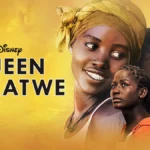The history of recorded music is a fascinating journey marked by technological advancements, changing consumer preferences, and cultural shifts. From the iconic crackle of vinyl records to the convenience of streaming services, each era has brought forth new formats that have shaped the way we experience and consume music. Let’s explore the evolution of music formats from vinyl to digital and beyond:
1. Vinyl Records:
Vinyl records, introduced in the late 19th century, revolutionized the music industry by enabling the mass production and distribution of recorded music. With their warm analog sound and tactile appeal, vinyl records became synonymous with the golden age of music, spanning genres from jazz and rock to classical and beyond. Despite the rise of digital formats, vinyl records have experienced a resurgence in recent years, prized by audiophiles and collectors for their nostalgic charm and tangible artwork.
2. Cassette Tapes:
In the 1960s, cassette tapes emerged as a portable and affordable alternative to vinyl records, allowing listeners to enjoy their favorite music on the go. The compact size and durability of cassette tapes made them popular among music lovers, who could easily create mixtapes and share music with friends. While cassette tapes eventually declined in popularity with the advent of CDs and digital formats, they hold a special place in music history as a symbol of the analog era.
3. Compact Discs (CDs):
The introduction of compact discs (CDs) in the 1980s marked a significant leap forward in music technology, offering superior sound quality and durability compared to vinyl records and cassette tapes. CDs quickly became the dominant music format, boasting features such as skip-free playback and digital audio encoding. The widespread adoption of CDs revolutionized the way music was produced, distributed, and consumed, paving the way for the digital revolution to come.
4. Digital Downloads:
The rise of the internet in the late 20th century brought about a seismic shift in the music industry, with the advent of digital downloads enabling consumers to purchase and download music directly to their devices. Platforms such as iTunes and Amazon MP3 popularized the digital download model, offering a convenient and cost-effective alternative to physical media. Digital downloads also paved the way for the unbundling of albums, allowing listeners to purchase individual tracks a la carte.
5. Streaming Services:
The proliferation of streaming services in the 21st century has transformed the way we access and consume music. Platforms such as Spotify, Apple Music, and YouTube Music offer unlimited access to vast libraries of songs, albums, and playlists, available on demand and across devices. Streaming services have democratized access to music, providing listeners with unprecedented choice and flexibility while revolutionizing the economics of the music industry.
6. Vinyl Revival:
In recent years, vinyl records have experienced a renaissance, fueled by a renewed interest in physical media and a desire for a tangible connection to music. Vinyl sales have surged, with collectors and enthusiasts flocking to record stores and online marketplaces to build their collections. The vinyl revival has also sparked a resurgence in vinyl production, with artists releasing new albums and reissues on vinyl alongside digital formats.
7. The Future of Music Formats:
As technology continues to evolve, the future of music formats remains uncertain. While streaming services currently dominate the market, emerging technologies such as high-resolution audio, immersive audio formats, and blockchain-based music distribution hold the promise of new possibilities for the way we experience and interact with music. Whether it’s the warm crackle of vinyl or the convenience of streaming, one thing is certain: the evolution of music formats will continue to shape the way we enjoy music for generations to come.
The evolution of music formats from vinyl to digital reflects the dynamic interplay between technology, culture, and consumer behavior. Each format has its own unique characteristics and appeal, contributing to the rich tapestry of musical history. Whether you prefer the nostalgia of vinyl records or the convenience of streaming, the diverse array of music formats ensures that there’s something for everyone to enjoy in the ever-changing landscape of recorded music.











